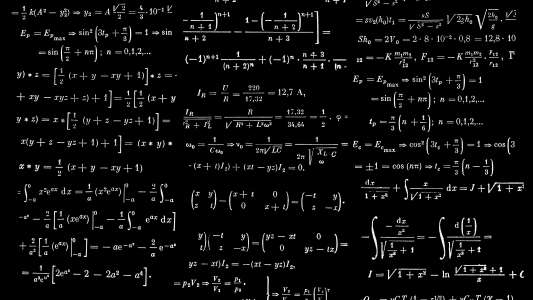When it comes to acing numerical reasoning tests or even just improving your everyday mathematical skills, understanding key numerical reasoning formulas is a must. In this article, we’ll delve into some of the most important numerical reasoning formulas you’ll need to learn to succeed in 2024 and beyond.
Having a strong numerical reasoning skill set can not only lead you to score well on tests, but it can also be applied to different areas of your life, including work and personal decisions.
Fundamentals of Numerical Reasoning Formulas
Numerical reasoning involves understanding and applying various formulas to solve mathematical problems. These are usually aligned with real-world scenarios, making the skill invaluable both academically and professionally. Deconstructed, numerical reasoning involves a balance of mathematical competency, an understanding of data interpretation, and logical thinking.
Tip: Practice makes perfect. The more you familiarize yourself with each numerical reasoning formula, the better equipped you’ll be to use them effectively.
Here are the fundamental numerical reasoning formulas you need to know:
Arithmetic Mean Formula
An arithmetic mean, commonly known as an average, can be calculated by dividing the total sum of numbers by the amount of numbers in a given dataset. The formula is given by:
Arithmetic Mean (Average) = Sum of Numbers/Count of Numbers
Median Formula
The median of a dataset is the middle number when the numbers are arranged in ascending or descending order. If the dataset contains an odd number of observations, the median is the middle number. If the dataset contains an even number of observations, the median is calculated by taking the average of the two middle numbers.
Median (Odd number of observations) = Middle Number
Median (Even number of observations) = Average of Two Middle Numbers
Mode Formula
The mode of a dataset is the number that occurs most frequently. There might be no mode if no number is repeated, one mode (unimodal) or more than one mode (multimodal).
Mode of dataset = Number which occurs most often
Range Formula
The range gives us the magnitude of the variation or dispersion of the numbers in the dataset. The range is the difference between the biggest and the smallest number.
Range = Maximum Number – Minimum Number
Percentage Increase/Decrease Formula
To calculate the percentage increase or decrease between two numbers, use the formula:
Percentage Increase/Decrease = (New Number - Original Number) * 100 / Original Number
Advanced Numerical Reasoning Formulas
Once you’ve mastered the fundamental numerical reasoning formulas, advancing your skills will involve incorporating these more complex formulas:
Standard Deviation Formula
Standard deviation measures the amount of variation or dispersion of a set of values. A low standard deviation means that the values tend to be close to the mean while a high standard deviation means that the values are spread out over a wider range.
Standard deviation = sqrt((sum(X – μ)^2)/n)
Where X represents each value in the dataset, μ is the mean of the dataset, and n is the number of values in the dataset.
Variance Formula
Variance shows how data points in a dataset are spread out around the mean. A small variance indicates that the data points are very close to the mean, and to each other. A high variance signifies that the data points are widely spread out from the mean and from each other.
Variance = (sum(X – μ)^2)/n
Where X stands for each value in the dataset, μ is the means of the dataset, and n is the number of values in the dataset.
Remember: All these formulas require some level of practice to master, especially when applying them to data interpretation. Start with familiarizing yourself with each formula and its purpose, then begin attempting to solve problems.
These numerical reasoning formulas outlined will equip you with the basics, whether you’re prepping for a professional exam or just looking to sharpen your numerical reasoning skills. As math concepts and problems evolve, the importance of mastering these core numerical reasoning formulas can’t be overstated for your continued numerical learning in 2024 and beyond.

